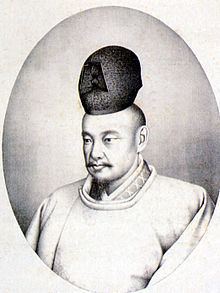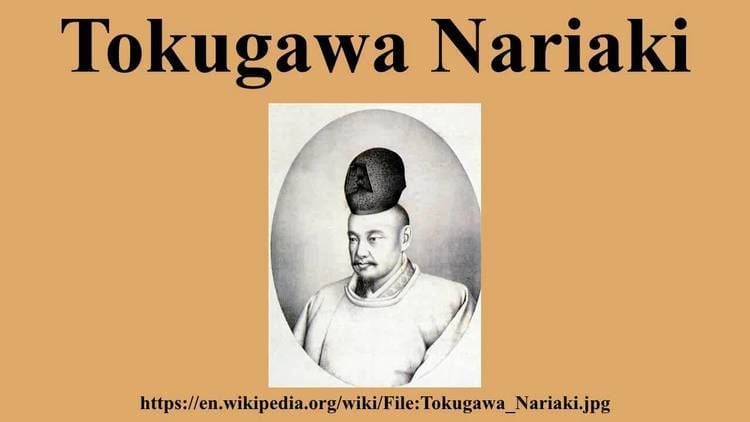Preceded by Tokugawa Narinobu Parents Tokugawa Harutoshi Name Tokugawa Nariaki | Nationality Japanese Succeeded by Tokugawa Yoshiatsu Grandparents Tokugawa Harumori | |
 | ||
Born April 4, 1800 ( 1800-04-04 ) Died September 29, 1860(1860-09-29) (aged 60) Children Tokugawa Yoshinobu, Tokugawa Akitake Grandchildren Yoshihisa Tokugawa, Ikeda Nakahiro Similar People | ||
Tokugawa Nariaki (徳川 斉昭, April 4, 1800 – September 29, 1860) was a prominent Japanese daimyō who ruled the Mito Domain (now Ibaraki Prefecture) and contributed to the rise of nationalism and the Meiji Restoration.
Contents

Clan leader
Nariaki was the 3rd son of Tokugawa Harutoshi, the seventh-generation daimyō of Mito. The family headship first passed to Harutoshi's eldest son Narinobu, before being passed on to Nariaki in 1829. Nariaki was also leader of the Jōi (expel the barbarian) party and made a Bakufu adviser on national defence.
Bakufu official
Nariaki was put in charge of Bakufu efforts to defend the country against encroaching foreigners. His own view was that the bakufu should strengthen its military and fight the foreigners, and was at odds with Ii Naosuke on the issue. He was pro-emperor and favored imperial restoration. Nariaki also greatly expanded the Mitogaku school established by Tokugawa Mitsukuni. He wrote a document entitled "Japan, Reject the Westerners" in 1853. in this document, he stated ten reasons why Japan should stay isolated from the rest of the world. He said that the Japanese people had a choice between war and peace, but clearly to him, the Japanese people should choose war so that Westerners would not intrude into Japan's affairs.
Nariaki and Naosuke fought over who would succeed the Shogun Iesada, with Nariaki championing his son Yoshinobu. Naosuke, who eventually prevailed, favored the Wakayama Domain daimyo Tokugawa Yoshitomi.
Legacy
In 1841, Nariaki built Kairaku-en, a garden whose fame lasts to this day.
Nariaki retired in 1844 in favor of his son Yoshiatsu, and died of a heart attack in 1860, at age 60.
Three of the leading figures of the 1860s were in fact natural brothers, all being sons of Nariaki: Hitoshubashi Yoshinobu, who became the 15th and last shogun as Tokugawa Yoshinobu in 1866; Tokugawa Yoshiatsu of Mito; and Ikeda Yoshinori of Inaba (Tottori).
Family
Works
Published posthumously:
